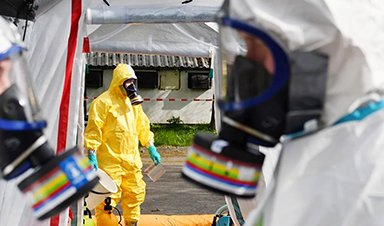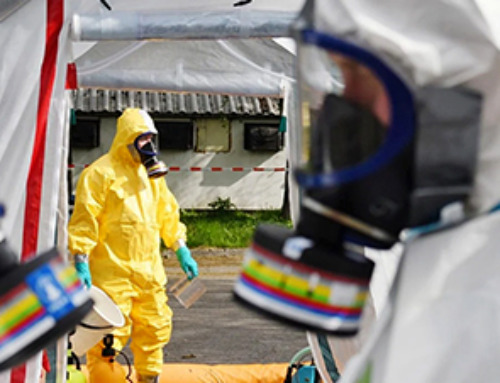A pioneering study has unveiled the Au-HN-1 nanosystem, a cutting-edge approach that promises to transform the diagnosis and treatment of tongue squamous cell carcinoma (TSCC). By harnessing gold nanoparticles coupled with the HN-1 peptide, this innovative system targets TSCC cells with unprecedented precision, offering enhanced photothermal therapy (PTT) and dual-mode imaging capabilities. With the ability to localize photosensitizers at tumor sites, the system boosts the effectiveness of tumor ablation, while its fluorescence and computed tomography (CT) imaging functions ensure accurate tumor detection and surgical margin identification. This breakthrough technology holds the potential to significantly improve treatment outcomes and the quality of life for patients battling TSCC.
Tongue squamous cell carcinoma (TSCC) is an aggressive cancer that is notoriously difficult to treat, with a high rate of metastasis and recurrence. Conventional therapies such as surgery, chemotherapy, and radiotherapy often lack the necessary specificity, resulting in debilitating side effects and diminished quality of life. Furthermore, accurately defining tumor margins during surgery remains a challenge, which can lead to incomplete resections and higher recurrence rates. With a grim prognosis and high mortality, TSCC underscores the urgent need for more effective, targeted therapies that can improve survival rates while minimizing collateral damage to healthy tissues.
Published (DOI: 10.1038/s41368-024-00343-7) on January 14, 2025, in the International Journal of Oral Science, researchers from Jilin University introduced the Au-HN-1 nanosystem, an innovative development designed for the dual purpose of targeting and treating TSCC. The study demonstrates how gold nanoparticles, modified with the HN-1 peptide, enable precise targeting of cancer cells, offering hope for more effective treatments for this deadly disease.
The Au-HN-1 nanosystem represents a quantum leap in the treatment and diagnosis of TSCC. By linking gold nanodots with the HN-1 peptide, the research team achieved highly selective targeting of TSCC cells, significantly improving the accumulation of photosensitizers at tumor sites. This targeted approach enhanced the efficacy of photothermal therapy (PTT) in mouse models, reducing tumor volumes without causing systemic toxicity. The nanosystem’s dual-mode imaging (fluorescence and CT) also allowed for accurate tumor localization and delineation of surgical margins—an essential factor in improving surgical outcomes. With its stability, biocompatibility, and minimal side effects, the Au-HN-1 system shows promising potential for long-term in vivo imaging and personalized cancer therapy. By combining diagnostic and therapeutic functions into a single, versatile system, this breakthrough minimizes damage to healthy tissues, marking a significant advance in cancer nanotechnology.
Dr. Guoqing Wang, the lead researcher of the study, emphasized the importance of this breakthrough: “The Au-HN-1 nanosystem is a major step forward in TSCC treatment, as it integrates targeted therapy with dual-mode imaging. This combination enhances therapeutic precision while safeguarding healthy tissue, pushing the boundaries of what’s possible in cancer nanotherapy.”
The Au-HN-1 nanosystem could transform the landscape of TSCC treatment and beyond. Its ability to improve photothermal therapy through targeted delivery of photosensitizers, coupled with real-time imaging, allows for precise tumor ablation and clearer tumor margin identification. This technology has the potential to revolutionize surgical procedures, reducing recurrence rates and improving patient outcomes. Furthermore, the versatility of the nanosystem suggests that it may be applicable to other head and neck cancers, offering hope for more effective and minimally invasive treatments. As ongoing research refines this system, it may pave the way for more personalized and precise cancer therapies, ultimately enhancing the lives of patients with TSCC and related malignancies.
Hao, M., et al. (2025). Tongue squamous cell carcinoma-targeting Au-HN-1 nanosystem for CT imaging and photothermal therapy. International Journal of Oral Science. doi.org/10.1038/s41368-024-00343-7.
News
Fever-Proof Bird Flu Variant Could Fuel the Next Pandemic
Bird flu viruses present a significant risk to humans because they can continue replicating at temperatures higher than a typical fever. Fever is one of the body’s main tools for slowing or stopping viral [...]
What could the future of nanoscience look like?
Society has a lot to thank for nanoscience. From improved health monitoring to reducing the size of electronics, scientists’ ability to delve deeper and better understand chemistry at the nanoscale has opened up numerous [...]
Scientists Melt Cancer’s Hidden “Power Hubs” and Stop Tumor Growth
Researchers discovered that in a rare kidney cancer, RNA builds droplet-like hubs that act as growth control centers inside tumor cells. By engineering a molecular switch to dissolve these hubs, they were able to halt cancer [...]
Platelet-inspired nanoparticles could improve treatment of inflammatory diseases
Scientists have developed platelet-inspired nanoparticles that deliver anti-inflammatory drugs directly to brain-computer interface implants, doubling their effectiveness. Scientists have found a way to improve the performance of brain-computer interface (BCI) electrodes by delivering anti-inflammatory drugs directly [...]
After 150 years, a new chapter in cancer therapy is finally beginning
For decades, researchers have been looking for ways to destroy cancer cells in a targeted manner without further weakening the body. But for many patients whose immune system is severely impaired by chemotherapy or radiation, [...]
Older chemical libraries show promise for fighting resistant strains of COVID-19 virus
SARS‑CoV‑2, the virus that causes COVID-19, continues to mutate, with some newer strains becoming less responsive to current antiviral treatments like Paxlovid. Now, University of California San Diego scientists and an international team of [...]
Lower doses of immunotherapy for skin cancer give better results, study suggests
According to a new study, lower doses of approved immunotherapy for malignant melanoma can give better results against tumors, while reducing side effects. This is reported by researchers at Karolinska Institutet in the Journal of the National [...]
Researchers highlight five pathways through which microplastics can harm the brain
Microplastics could be fueling neurodegenerative diseases like Alzheimer's and Parkinson's, with a new study highlighting five ways microplastics can trigger inflammation and damage in the brain. More than 57 million people live with dementia, [...]
Tiny Metal Nanodots Obliterate Cancer Cells While Largely Sparing Healthy Tissue
Scientists have developed tiny metal-oxide particles that push cancer cells past their stress limits while sparing healthy tissue. An international team led by RMIT University has developed tiny particles called nanodots, crafted from a metallic compound, [...]
Gold Nanoclusters Could Supercharge Quantum Computers
Researchers found that gold “super atoms” can behave like the atoms in top-tier quantum systems—only far easier to scale. These tiny clusters can be customized at the molecular level, offering a powerful, tunable foundation [...]
A single shot of HPV vaccine may be enough to fight cervical cancer, study finds
WASHINGTON -- A single HPV vaccination appears just as effective as two doses at preventing the viral infection that causes cervical cancer, researchers reported Wednesday. HPV, or human papillomavirus, is very common and spread [...]
New technique overcomes technological barrier in 3D brain imaging
Scientists at the Swiss Light Source SLS have succeeded in mapping a piece of brain tissue in 3D at unprecedented resolution using X-rays, non-destructively. The breakthrough overcomes a long-standing technological barrier that had limited [...]
Scientists Uncover Hidden Blood Pattern in Long COVID
Researchers found persistent microclot and NET structures in Long COVID blood that may explain long-lasting symptoms. Researchers examining Long COVID have identified a structural connection between circulating microclots and neutrophil extracellular traps (NETs). The [...]
This Cellular Trick Helps Cancer Spread, but Could Also Stop It
Groups of normal cbiells can sense far into their surroundings, helping explain cancer cell migration. Understanding this ability could lead to new ways to limit tumor spread. The tale of the princess and the [...]
New mRNA therapy targets drug-resistant pneumonia
Bacteria that multiply on surfaces are a major headache in health care when they gain a foothold on, for example, implants or in catheters. Researchers at Chalmers University of Technology in Sweden have found [...]
Current Heart Health Guidelines Are Failing To Catch a Deadly Genetic Killer
New research reveals that standard screening misses most people with a common inherited cholesterol disorder. A Mayo Clinic study reports that current genetic screening guidelines overlook most people who have familial hypercholesterolemia, an inherited disorder that [...]





















